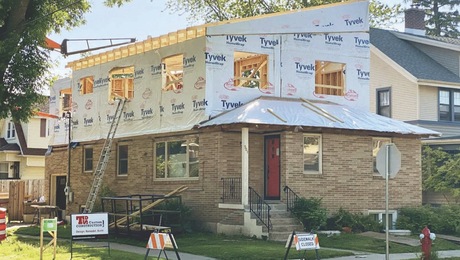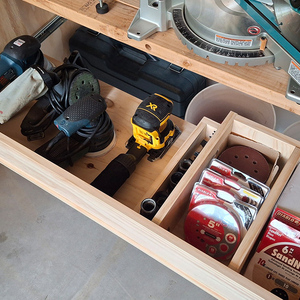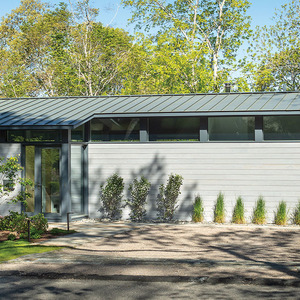Looking for some help sizing the cable for the run from my main breaker on the outside of the house, approx 50′ to the subpanel inside the house. The subpanel will handle the full 200A of the service, and all of the household circuits.
My code (IRC 2003) says I need 4/0 AL or two sets of 1/0 AL. Given that 1/0 is $2.50/ft around here, I shudder to think what the 4/0 goes for. I can also use 2/0 copper, but given what copper prices have been doing lately, I don’t even want to know what that is going for.
Here’s my issue: I’m not a professional contractor, so I don’t have an account at some slectrical supply house, and I haven’t gotten real warm receptions at most pro supply houses I go to (lumber yards excluded). They all tell me I need an account, etc. My local HD has 1/0 AL but nothing bigger, and I can’t picture how to run two sets of 1/0 from my main to my subpanel. There is only 1 set of lugs on the main. Do I put both conductors in each lug? This doesn’t seem like the way other things are done under the NEC.
Can anyone tell me how to run the “two sets”, or is there a good reason I should just find someone that will sell me the 4/0.
Thanks!
-Rich



















Replies
I have always used 2/0 or 3/0 copper and be done with it. I have seen and repaired too many aluminum wire failures.
Most house fires are due to electrical problems. Using good materials is cheap security.
I bought 4/0-4/0-2/0 aluminum at Menard's at a reasonable price (compared to copper!). Just pay attention and do a good job of wire brushing the conductor strands, applying antioxidant and torqueing the connections.
What you stated about proper preparation is so critcial in aluminum wire.
You have the code book and I don't have time to search it out.
But you are only allowed to parallel conductors if they are over a certain size. And I don't think that those qualify.
Also you need a connections that will take multiple lugs which you don't have.
Sounds like I need to seek out the big stuff. It's been frustrating trying to get this issue clarified. Every person I talk to says something different. I was initially told that if I used 4/0 (AL) SER cable that I don't need to use conduit to run from my main breaker to the subpanel (the entire run is in the crawlspace). Now I'm being told that is not the case. Two electricians today told me that they didn't think you were allowed to use AL wire "for that anymore". Since when? And I need to use conduit...
That is exactly what SE cable is for.And you can run aluminum.Most POCO drops, if not all, are aluminum.And aluminum is common for feeders.Now your local might have modified the NEC to require conduit and/or copper.
My dad who is retired from a major utility company will not use aluminum wire in a home. The drops from the pole are aluminum and much smaller wire simply because the wire is in the air. If the wire failed by heating up and melting it could not possibly cause a fire.
Don't forget that this is a feed to a SUB-PANEL. Two hots, an insulated neutral, and a ground are required. Make sure that you purchase the correct type [ number of conductors] for the purpose.
Lots of folks think that because the power company delivers power to main panel on three wires, that it's OK to feed a sub-panel that way. WRONG.
Good luck on your installation. Parallel conductors are OK if larger than 1/0, the same length, and are terminated in terminals listed for the purpose, ie., two barrel lugs .
Personally, I would use copper if you can swing the upfront cost. Aluminum conductors are hard to terminate properly and they must be checked for tightness periodically.
your not here in kansas,but close.check and see if you have a place called locke supply,here they will sell to anyone.like another poster stated you need 4 wire not 3. i just bought 4 wire service entrance 1/0 rated for about 125 amp for 2.30 a foot.lowes here carries a 4/0 4 wire "called mobile home entrance" i thinkit will work but would have to be in conduit i think it's about 3.50 ft.just close your eyes,it's only 200.00 to do it right. larry
hand me the chainsaw, i need to trim the casing just a hair.